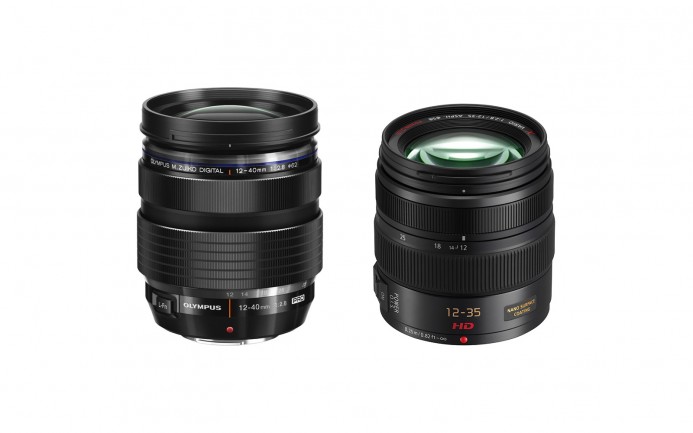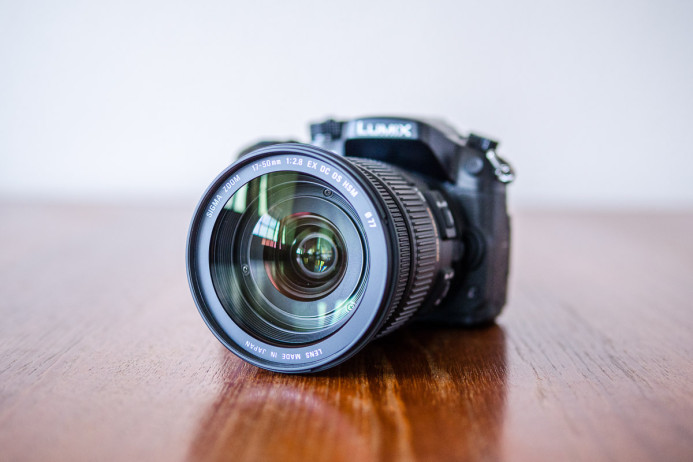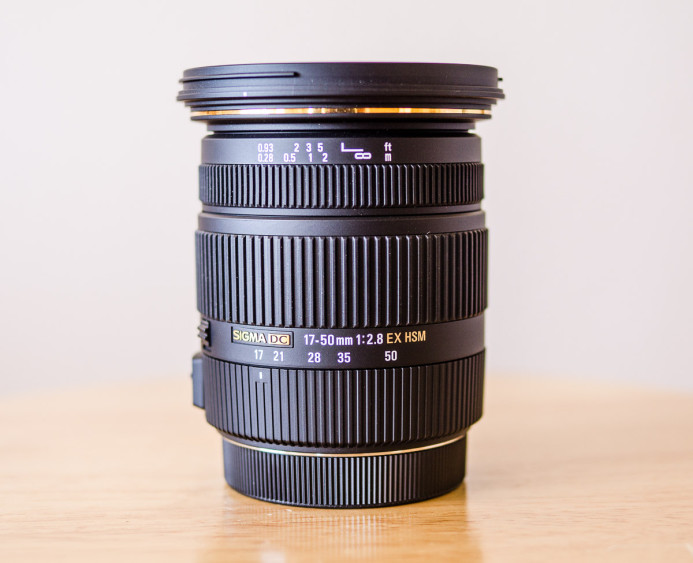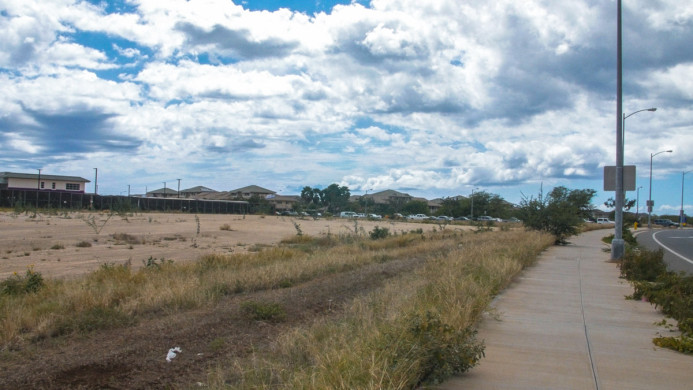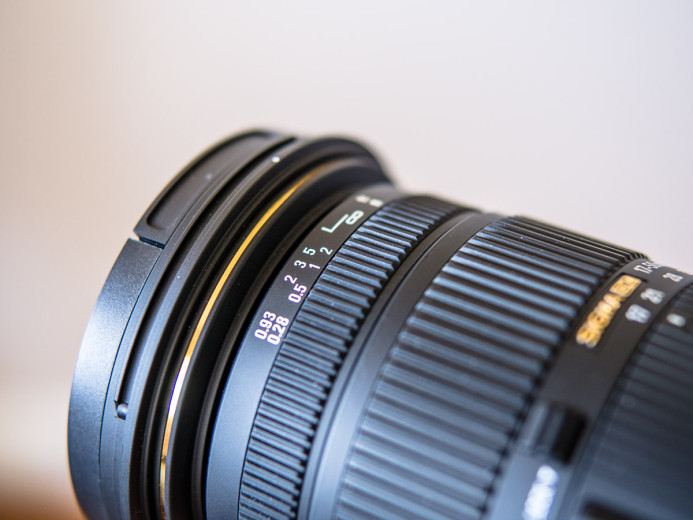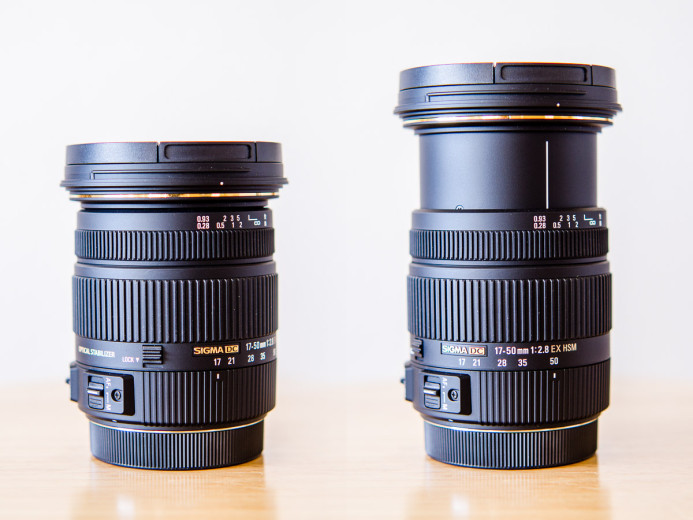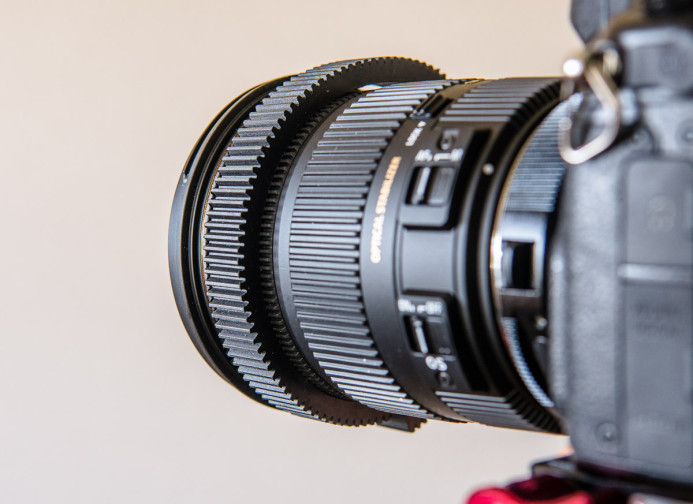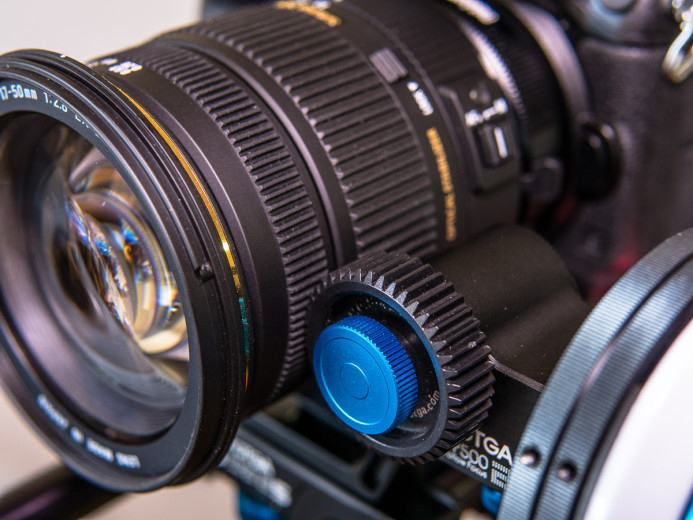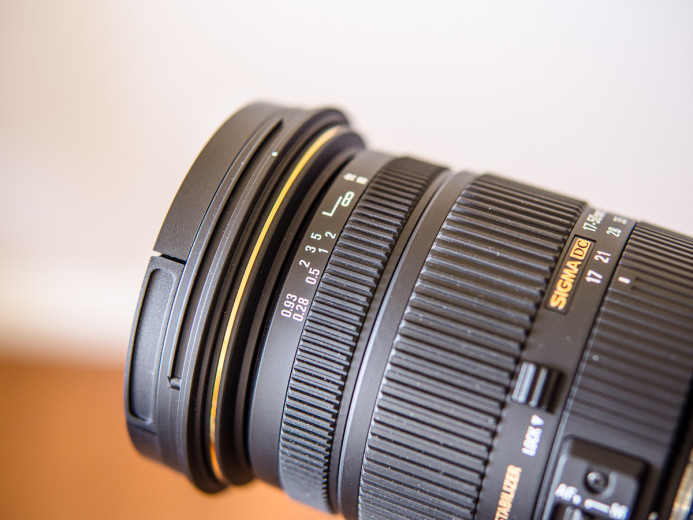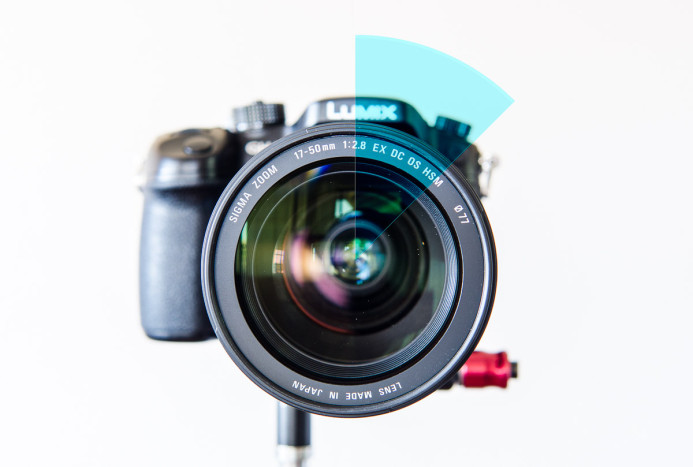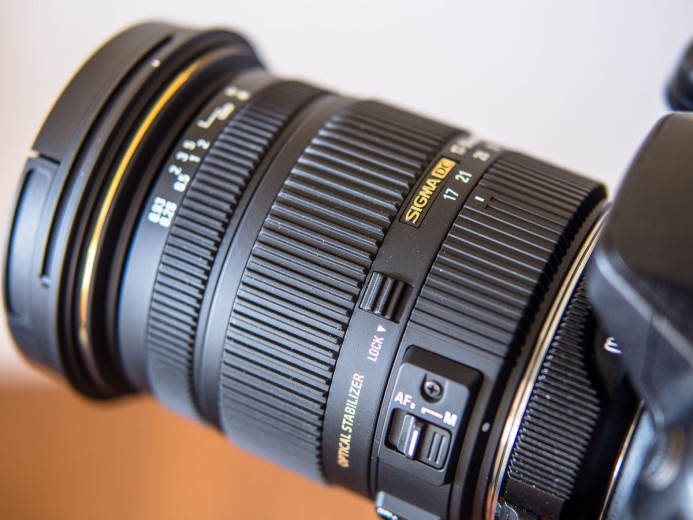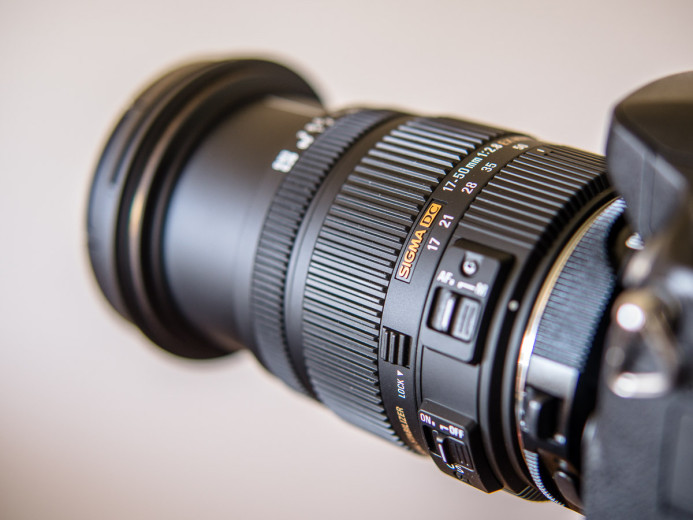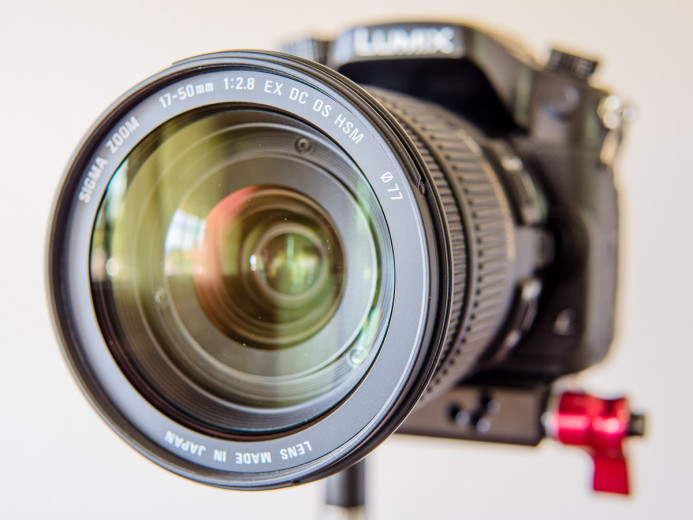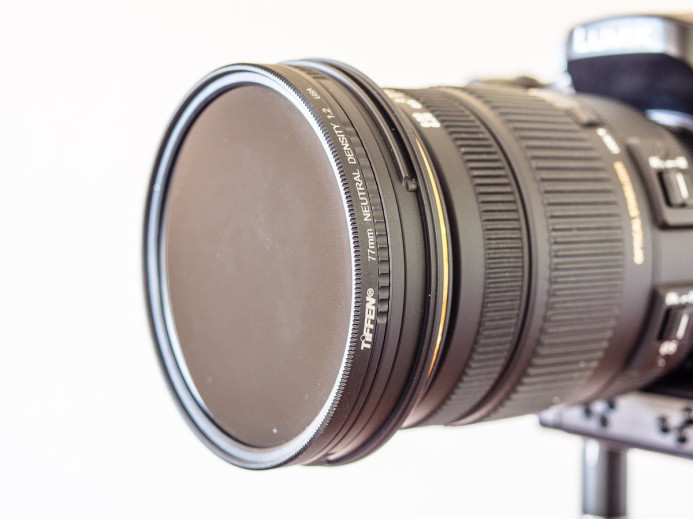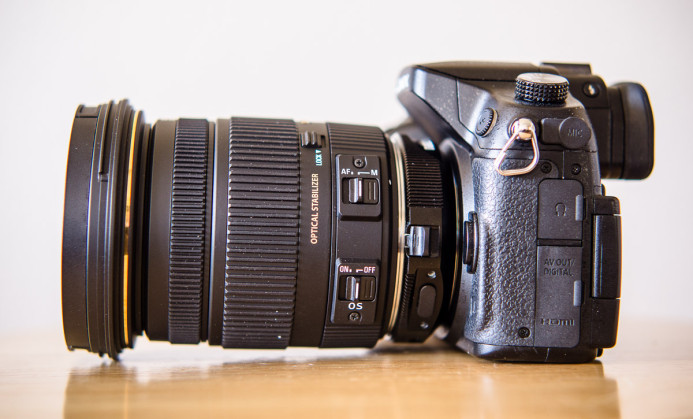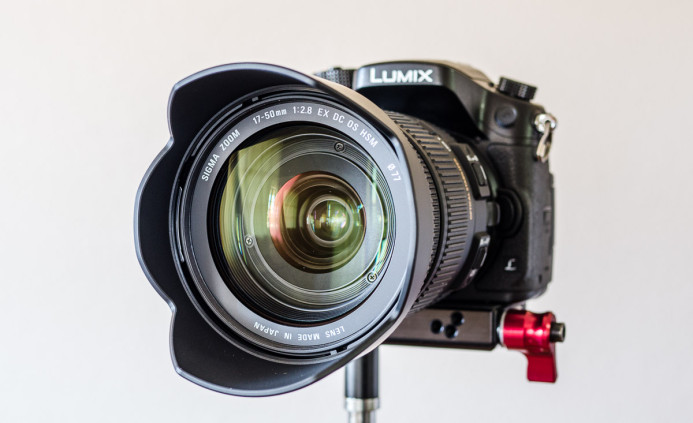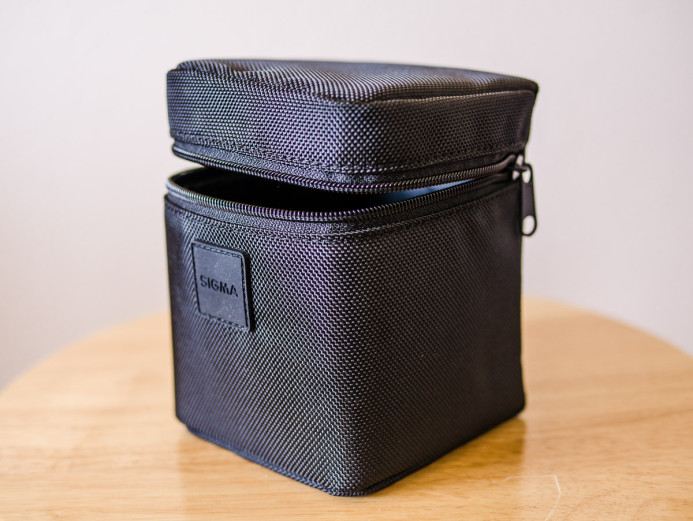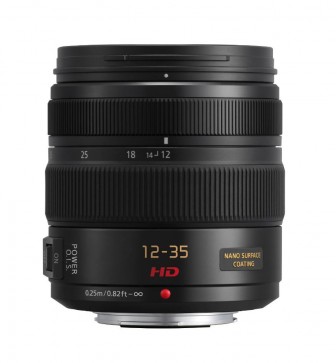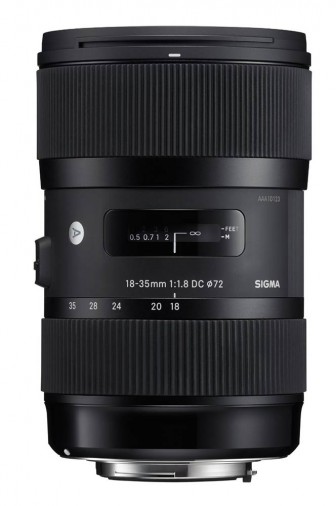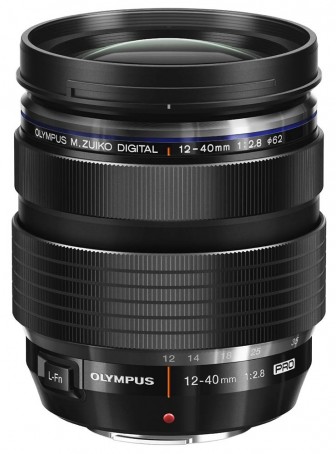Run & Gun Lens Shootout: Sigma 17-50mm f/2.8
Looking for fast constant-aperture zoom lens for the Panasonic GH4 for about $500?
It might sound like a fantasy, but it’s not just a pipe dream.
Olympus’ 12-40mm f/2.8 and Panasonic’s 12-35mm f/2.8 are popular run & gun lenses for the GH4. Their 3x (more or less) zoom range from wide to medium-tele focal lengths gives you versatility in your framing and the relatively fast f/2.8 constant aperture is helpful when shooting in low-light environments.
However, with a nearly-$1K price tag, Panasonic’s native zoom lens will not fit in everyone’s budget. Also, the lens’ lack of repeatable manual focus and the absence of hard stops on the focus ring may be a deal-breaker for some shooters.
Enter the Sigma 17-50mm f/2.8 zoom lens.
Like Panasonic’s 12-35mm, Sigma’s 17-50mm has a 3x zoom range and a constant f/2.8 aperture. However, unlike Panasonic’s zoom, Sigma’s 17-50mm has a focus ring with hard stops for repeatable manual focus.
Here’s the kicker: The Sigma 17-50mm f/2.8 only costs about $500 (or less– more on this later)
When paired with Metabones’ EF Speed Booster adapter, the 17-50mm f/2.8 becomes a 12-36mm f/2.0 zoom lens. This matches the Panasonic lens’ zoom range, but with a 1 stop wider aperture.
On paper, Sigma’s 17-50mm f/2.8 ticks all the right boxes and looks like a great option for run & gun shooters. However, specs alone don’t tell the whole story, so we’ve been testing the Sigma 17-50mm f/2.8 (Canon EF mount) with the Metabones EF Speed Booster (“S” version) adapter courtesy of B&H to see how it stacks up to the competition.
Just the Stats Ma’am
- Lens Type: Zoom
- Zoom Range: 17-50mm (12-36mm with Speed Booster)
- Lens Mount: Canon EF (used in this review), Nikon G
- Maximum Aperture: f/2.8 (f/2.0 with Speed Booster)
- Filter Diameter: 77mm
- Focus
- Hard Stops: Yes
- Repeatable: Yes
- Throw (end-to-end): 45°
- Image Stabilization: Yes
- Dimensions: 8.38cm x 9.14cm (3.3in x 3.6in)
- Weight: 564g (1.2lb)
- Price (street): $519
- More Information / Buy this lens
Build Quality
The Sigma 17-50mm f/2.8 has been around since 2008, so it doesn’t feature the same styling as some of Sigma’s newer lenses, such as their 18-35mm f/1.8 zoom lens.
That said, while it might not feel as refined as Sigma’s Art series of lenses, the 17-50mm is generally solid and well-built. The lens’ housing is made mostly out of lightweight plastic, but it does not feel fragile.
The lens also rattles softly. This might be a bit disconcerting at first, but there’s no reason to worry– it’s just the lens’ image stabilization assembly. The rattling vanishes when the lens is powered (even when image stabilization is disabled).
Note: This means that the lens may rattle during when using a passive adapter that does not supply power to the lens (e.g. a Nikon-mount adapter).
Bottom line: Build quality is generally good, despite lacking the refined styling of Sigma’s newer Art-series lenses.
Image Quality
The Sigma 17-50mm f/2.8 delivers solid image quality.
No glaring image quality issues were encountered, and the lens was definitely usable even wide-open at f/2.8. As with most lenses though, the 17-50mm’s performance increases when you stop it down a bit, so things sharped up nicely between f/4 and f/5.6.
Here’s a frame from some 4K footage shot with the 17-50mm at f/2.8, with only some light adjustments:
With a maximum aperture of f/2.8, you’re not going to get an extremely shallow depth of field (DOF) with this lens, but it’s about as wide of an aperture as you’ll get in a zoom lens (save for the rare exceptions like Sigma’s 18-35mm f/1.8). The f/2 aperture when used with the Speed Booster does improve subject/background isolation though.
Bottom line: Usable image wide open. DOF is not as shallow as some fast primes, but quite good for a zoom lens.
Manual Focus Ring
The 17-50mm’s focus ring is positioned at the front of the lens barrel and is rather narrow, especially compared to the lens’ wide zoom ring.
A skinny focus ring can be an issue when using a follow focus, especially if the ring moves forward or backward when adjusting focus or when changing the focal length with the zoom ring. Thankfully, the 17-50mm’s focus ring remains in the same position at all times, so keeping a follow focus’ gear engaged with the focus ring is not a problem.
Furthermore, despite being narrow, the 17-50mm’s focus ring is fortunately wide enough to use with most follow focus gears.
Here’s the bad news: the focus ring is not dampened. This can make smooth focus pulls somewhat trying. I recommend using a dampened follow focus to help you perform smooth focus pulls with this lens. For example, Fotga’s DP500IIS follow focus has adjustable dampening that works well for this purpose.
Hard Stops
A focus ring with hard stops is hard to come by on modern still lenses, but Sigma 17-50mm has hard stops at each of its focus range (close-focus & infinity). This allows for consistent and repeatable focus control, which is something that is simply not possible with most native lenses like Panasonic’s 12-35mm f/2.8 zoom due to their fly-by-wire focus rings.
Short Throw
Unfortunately, the 17-50mm’s focus ring has a rather short throw. From close-focus to infinity, the focus ring only rotates 45 degrees.
When shooting narrative work, where slow focus pulls are more common, the focus ring’s short throw can make focusing more difficult, as small adjustments can dramatically shift the lens’ focal plane.
However, for run & gun shooting where fast on-the-fly focusing is the norm, the focus ring’s short throw is less of an issue. Since focus adjustments are consistent and repeatable with the Sigma 17-50mm, it will be easier to develop muscle memory to help you find the proper focus when shooting on the move with this lens.
Bottom line: The focus ring provides repeatable focus and hard stops, but the lack of dampening and short throw make it more appropriate for run and gun shooting than narrative work.
Zoom Ring
Compared to the 17-50mm’s narrow focus ring, its zoom ring is nice and wide, allowing you to easily find it by touch when shooting.
Unfortunately, while the zoom ring turns relatively smoothly, it also is not dampened. If you do live zooms (i.e. zooming in-shot), this lens may not provide the smoothest performance.
Also note that the 17-50mm’s barrel extends outward as you zoom in. This can be an issue if you are using a matte box in front of this lens. You’ll also need to rebalance the camera after adjusting the lens’ focal length when shooting on a stabilizer, such as a Glidecam or a 3-axis gimbal.
77mm Filter Thread
The Sigma 17-50mm has a 77mm filter thread, which is generally the largest filter diameter for still photography lenses.
If you standardize your lenses to use 77mm filters like I do, you’ll be happy with the 17-50mm since you can use your 77mm filters directly on this lens without needing any additional step-up rings.
Bottom line: A 77mm filter thread makes it easy to use a standard set of filters without requiring any additional step-up rings.
Large Lens Barrel
The Sigma 17-50mm has a relatively large barrel. With an 8.38cm diameter, the lens is wider than most native lenses for the GH4. In fact, the lens barrel is so wide that it extends beyond the GH4’s base.
This can present some issues when using a long tripod plate with the GH4, as the lens will cause the plate to be mounted at an angle, rather than flush with the camera. As a result, you may have to use a riser under the camera to provide enough clearance between the tripod plate and the lens.
I use Zacuto’s Gorilla Plate under the GH4, which raises the camera up, making this a non-issue. However, you could also use a simple riser block like Wooden Camera’s Easy Plate or a small QR clamp & plate to provide the necessary clearance between the tripod plate and the lens.
Bottom line: The wide lens barrel extends below the bottom of the GH4, so a riser will be required to mount the camera on some tripods where the lens would get in the way.
Hood & Pouch Included
The Sigma 17-50mm includes a petal-style lens hood that twists and locks on to the front of the lens with a satisfying click. Attaching and detaching it from the lens is quick and easy.
The lens also comes with a custom-fit carrying case. The case is well-made and lightly-padded to protect the lens during storage or transportation.
Bottom line: You don’t need to buy additional accessories for this lens– a custom-designed hood and pouch are included in the box.
Sigma 17-50mm f/2.8 vs. the Competition
Now that you know what Sigma’s 17-50mm offers, let’s see how it stacks up to the top run & gun lenses for the GH4.
Panasonic 12-35mm f/2.8
- Zoom Range: Draw — When used with the Metabones Speed Booster, the 17-50mm has virtually the same zoom range (12-36mm) as Panasonic’s native zoom.
- Aperture: Sigma 17-50mm — Sigma’s lens has a 1 stop advantage (f/2.0 vs f/2.8) over Panasonic’s lens when used with the Metabones Speed Booster.
- Focus: Sigma 17-50mm — The 17-50mm’s focus ring features hard stops and delivers repeatable focus. The Panasonic’s fly-by-wire focus ring cannot compete with this, though it is nicely dampened.
- Build Quality: Draw — Both feature plastic construction, but neither lens is fragile.
- Size & Weight: Panasonic 12-35mm — Less than half the weight of Sigma’s 17-50mm.
- Price: Sigma 17-50mm — If you already have an adapter (such as the Metabones Speed Booster), the 17-50mm is nearly half the price of Panasonic’s zoom. If you don’t have an adapter, the total cost is about the same.
Winner: Sigma 17-50mm f/2.8 — Unless you need autofocus, Sigma 17-50mm f/2.8 is a better run & gun option overall compared to Panasonic’s 12-35mm f/2.8 native zoom lens.
Sigma 18-35mm f/1.8
- Zoom Range: Sigma 17-50mm — The 17-50mm’s 3x zoom range provides more flexibility compared to the 18-35mm’s 2x zoom range.
- Aperture: Sigma 18-35mm — The 18-35mm’s f/1.8 maximum aperture has a 1-1/3 stop advantage over the 17-50mm’s f/2.8 aperture, providing better low-light performance and shallower depth of field.
- Focus: Sigma 18-35mm — The 17-50mm’s hard stops provide good feedback, but the 18-35mm’s focus ring is much smoother and features a longer focus throw. A follow focus can be used to provide hard stops at each end of the 18-35mm’s focus range.
- Build Quality: Sigma 18-35mm — As part of Sigma’s Art series of lenses, the 18-35mm is more refined and feels more solidly-built than the 17-50mm.
- Size & Weight: Sigma 17-50mm — The 17-50mm is smaller and 30% lighter than the beastly 18-35mm.
- Price: Sigma 17-50mm — The 17-50mm is priced nearly $300 lower than the 18-35mm.
Winner: Tie — The 18-35mm is much better in low-light environments, but if you need a lighter lens with a more versatile zoom range, then the 17-50mm fits the bill.
Olympus 12-40mm f/2.8
- Zoom Range: Olympus 12-40mm — The Olympus 12-40mm edges out the Sigma 17-50mm with 10% more zoom range (3.3x vs 3x)
- Aperture: Sigma 17-50mm — Sigma’s 17-50mm has a 1 stop advantage (f/2.0 vs f/2.8) over Olympus’ lens when used with the Metabones Speed Booster.
- Focus: Olympus 12-40mm — The Olympus also has a focus ring with hard stops and repeatable focus, but it is also dampened for smooth focus pulls, unlike the Sigma.
- Build Quality: Olympus 12-40mm — Olympus’ lens feels more solid than Sigma’s lens.
- Size & Weight: Olympus 12-40mm — Nearly half the weight of the Sigma 17-50mm & Metabones Speed Booster adapter.
- Price: Draw — If you already own an adapter, the Sigma is cheaper. Otherwise, the Olympus lens is frequently available for under $900.
Winner: Olympus 12-40mm f/2.8 — Better build quality, smoother focusing, and perfectly balanced with the GH4 make the Olympus 12-40mm one of the best run & gun lenses for the GH4.
Versatile, Fast, & Affordable
Sigma’s 17-50mm stands shoulder-to-shoulder with the best run & gun lenses available for the GH4. With a versatile zoom range, a fast constant aperture, and an affordable price, this lens warrants consideration by any run & gun shooter looking for a lens in this range.
Things only get better when you pair the 17-50mm with the Metabones Speed Booster adapter to gain a wider field of view and increase the maximum aperture by 1 stop.
The undampened focus and zoom rings are the 17-50mm’s only glaring issues, as they make smooth zooms and focus pulls more difficult than they ought to be. The focus ring is fine for on the fly manual focusing, but less than ideal if you require slow and precise focus pulls.
Overall, the Sigma 17-50mm f/2.8 is a solid lens for documentary and run & gun work with the GH4. Plus, with a price of about $500, this lens is an affordable option for anyone who already has an adapter for this lens.
Note: B&H currently offers a 4% rebate when you buy this lens, so you can actually get this lens for under $500 after the rebate.
Related
- Sigma 17-50mm f/2.8 (Canon EF mount)
- Sigma 17-50mm f/2.8 (Nikon mount)
- Metabones Canon EF to MFT Speed Booster
- Metabones Nikon G to MFT Speed Booster
- Fotga DP500IIS Follow Focus
- Zacuto Gorilla Plate
- Wooden Camera Easy Plate
- Panasonic GH4
Lens Options for the Panasonic GH4
Introduction
- Micro Four-Thirds: Introduction & Overview
- Using Native Lenses
- Using Adapted Lenses
- How to Choose Your First Lens
Canon EF Lenses
- Using Canon EF Lenses
- Review: 7 Days with Metabones’ Canon EF Speed Booster
- Speed Booster Showdown: Canon EF vs Nikon
- PSA: Canon EF-S is not the Same as APS-C
Prime Lenses
- 5 Reasons You Should Be Using Prime Lenses
- 9 Awesome Prime Lenses (Wide Angle to Telephoto)
- Essential Prime Lenses for Your Documentary
Zoom Lenses
- 4 Reasons Zoom Lenses are Awesome for the Panasonic GH4
- Lens Throwdown: Panasonic 12-35mm f/2.8 vs Olympus 12-40mm f/2.8
Buying Guides
More Panasonic GH4 Guides
- Why You Should Be Excited About the Panasonic GH4
- Lenses for the Panasonic GH4 — Awesome glass for an awesome camera.
- Memory Cards for the Panasonic GH4 — Get the right memory cards for HD and 4K.
- Configuring the Panasonic GH4 for Video Production — Set the GH4 up for filmmaking.
- Rigging the Panasonic GH4 — Cages, Rigs, Components, Gear, and Reviews.
- Stabilizing the Panasonic GH4 — Tripods, Monopods, Sliders, 3-Axis Gimbals, etc.
- Maximizing the Panasonic GH4’s Audio Performance — Sound matters.
- Powering the Panasonic GH4 — Keep the GH4 shooting all day.
- Should you buy the YAGH for the Panasonic GH4?
- 6 Reasons Why DSLR Shooters Love the Panasonic GH4
